European Refugee Musicians in Canada, 1937 to 1950
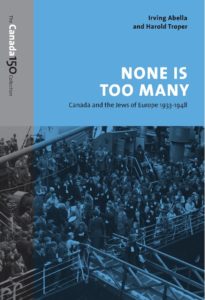
The 75th anniversary of the end of the European campaign of World War II is a good time to reflect on the contributions to music in Canada of musicians who arrived between 1937 and 1950 as refugees from Nazi-occupied Europe. The total number of those who were admitted from Europe during that time was small—not many musicians managed to navigate Canada’s restrictive immigration policies to find safe haven here. Abella and Troper have shown in detail in their book None Is Too Many the obstacles to Jewish immigration that were in place at the time, as well as the antisemitism that was rife in the country, up to and including the highest political and civil service offices. Despite such formidable hurdles, dozens of Jewish musicians (as well as some non-Jewish musicians who left for moral and/or political reasons) did manage to escape Europe and arrive in Canada, and went on to enjoy important professional careers in music over many decades, from the time of their arrival until well into the twenty-first century.
Background and Context

Between 1937 and 1950, ca. 100 refugee musicians from Europe immigrated to Canada. The vast majority came only after 1948, when Prime Minister Mackenzie King in his final year in office slowly began to ease the restrictive immigration laws that had been in place up to that time. The routes that these musicians travelled to arrive in Canada were as varied as their musical interests. A small number arrived directly from Europe; others followed a more indirect path—typically via Britain or the USA, but also from Shanghai (whose sector for stateless refugees provided safe haven for thousands of Jews during the war), Palestine, and other places to which Jews had fled during the Nazi era. Quite a few arrived as interned enemy aliens; they were arrested in Britain, shipped to Canada in 1940 to be placed in prison camps, but then chose to stay on in Canada after their release, as described by the late Eric Koch (1919–2018) in his book Deemed Suspect: A Wartime Blunder. Some of the musicians had received advanced training in elite European music schools; others received much of their training only after arriving in Canada. These refugee musicians are of interest today not only because of the harrowing nature of their personal history and tortuous journeys to Canada, but also because collectively they made such a significant contribution to music in Canada during their careers in a wide variety of fields of activity, ranging from concert management to music scholarship. Collectively, they did quite remarkable work in fostering the spread of European classical music culture in Canada, but they were also involved in the growth of other fields such as Canadian music studies and ethnomusicology.
One prior source attempted to tell the story of these musicians in detail: Paul Helmer’s Growing with Canada. Helmer is a musicologist and professional pianist who taught at McGill University from 1972 to 2002. His specialization as a musicologist was medieval music; this book resulted from a late-career project to document the experiences of European émigré musicians in Canada, many of them his teachers, colleagues, and friends. His book examines the contributions to the musical life of Canada by 123 people exiled from Nazi and Communist regimes in central Europe between 1933 and 1948, who arrived in Canada between 1937 and 1965. These men and women made important and lasting contributions to the growth and development of Canada’s musical life through diverse musical activities, including performance, education, composition, administration, scholarship, and patronage.
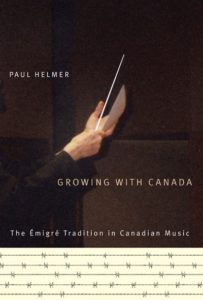
The life and work of some of these émigrés has been the subject of previous research, commentary and analysis in monographs and other writings, but most of the figures discussed by Helmer are little known and many had not been written about before at all. The United States attracted famous émigré musicians such as Arnold Schoenberg, Paul Hindemith, and Béla Bartók, whose contributions to the musical life of their adopted country is the subject of an extensive and steadily growing scholarly literature. Canada was much more restrictive than the United States in its immigration policies during most of the period under consideration here (the reasons for this are described in painful detail in None Is Too Many). As a result, far fewer exiled musicians found a home in Canada than in the United States, and none of those who did so are internationally renowned. Nevertheless, these refugee musicians did have a profound and lasting impact on the musical life of their adopted country in many areas.
Helmer did archival research and conducted interviews with many of the people that he discusses in his book. It was timely that he took up the project when he did, as all the musicians whom he interviewed have died in the interim. Helmer deposited recordings and transcripts of the interviews, and other primary and secondary research material for his book, in the Marvin Duchow Music Library at McGill University, where it is accessible to researchers. A description and finding aid are available online here.
The story of each refugee musician is singular and unique to that individual, but at the same time is only comprehensible within the framework of the bigger historical picture that unfolded during this time. Variable factors include the conditions of the subject’s pre-migration life (their age at the time of leaving their homeland, prior education and training, socio-economic status, severity of persecution and trauma), the circumstances of their transit (length/uncertainty of the travel, direct or indirect route, duration of time spent in intervening locales), and features related to the resettlement process (degree of economic success, relations with the host society, adaptation to new cultural surroundings). In considering European refugee musicians in Canada, all of these factors must be taken into consideration, on both individual and collective levels.
Many of the musicians who migrated from Nazi-occupied Europe to Canada between 1933 and 1950 enjoyed significant careers in music and exercised a profound impact on the cultural life of this country. As a brief sample, here are a dozen snapshots of refugee musicians and their contributions to four areas of musical activity in Canada: composition, education, performance, and scholarship.
Composition
The composers Istvan Anhalt, Otto Joachim, and Oskar Morawetz received their early musical training in central Europe and arrived in Canada in the 1940s. Morawetz migrated to Toronto in 1940 to join his parents, whereas Anhalt and Joachim came on their own to Montreal in 1949.
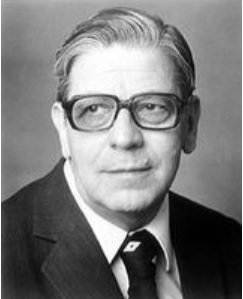
Oskar Morawetz was born in Czechoslovakia and studied music in Prague, Vienna, and Paris. With abundant musical talent but no academic credentials, he enrolled in music studies at the University of Toronto and completed a BMus in 1944 and a doctorate in music in 1953. He had a lengthy career as a professor at the University of Toronto and as a frequently commissioned and performed composer. His most popular works, including Memorial to Martin Luther King (1968) for cello and orchestra and From the Diary of Anne Frank (1970) for voice and orchestra, received numerous performances across Canada and internationally. Morawetz explored novel instrumental colours and new harmonic effects in his music, but nevertheless was regarded as a conservative composer by his contemporaries at a time when this was not a prized characteristic in the academic music circles in which he operated. Despite this fact, he enjoyed a lengthy and successful career from the mid-1940s until his creative activity was curtailed by depression and mental health problems in the mid-1990s; he passed away in 2007.
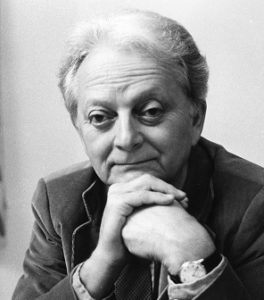
In contrast to Morawetz, Anhalt and Joachim were two of the leading figures in avant-garde composition during the second half of the 20th century in Canada. Born into a Jewish family in Budapest in 1919, Istvan Anhalt was conscripted into a Hungarian forced labour battalion, but managed to escape and live in hiding until the end of the war. He emigrated to Canada in 1949, making his home at first in Montreal, where he taught at McGill University until 1971, and then in Kingston, where he was a faculty member at Queen’s University until his retirement in 1984. He made use of modernist compositional techniques and media including dodecaphony, electronic music, and extended vocal techniques. Many of his most significant compositions are for orchestra, but he wrote in all of the major genres, from solo instrumental works to opera. From the mid-1970s onwards, he began to use more traditional compositional techniques, from which he fashioned an original, distinctive, and evocative idiom that was capable of expressing both musical logic and extra-musical ideas. Anhalt’s stature as a composer, together with a steadily growing body of scholarly work on his music, suggest that he will retain his place as an important voice in Canadian music of his era. In addition to his work as a composer, Anhalt had a lengthy and important career as a university professor and administrator, and he was known for his publications as an insightful and imaginative music theorist, especially for his writings on music for the human voice. He died in Kingston in 2012 at the age of 92, after being hospitalized for a year with cancer.
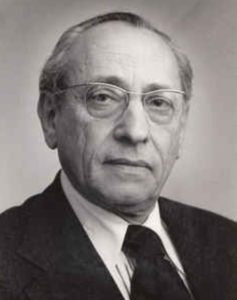
Otto Joachim was a pioneer in electronic music in Canada, as well as a composer in more traditional media. He was also a fine professional violist, and later in life took up painting and sculpture. Born into a Jewish family in Düsseldorf, he studied music there and also in Cologne. In 1934, he fled Nazi Germany and spent the war years in Singapore and Shanghai. With the Communist takeover of China in 1949, Joachim and his brother Walter, a professional cellist, emigrated to Montreal. Walter and Otto enjoyed prominent careers as performers in the Montreal Symphony, McGill Chamber Orchestra, and Montreal String Quartet. As a composer, Otto Joachim was at the cutting edge of modernism in Canada. He was among the first to employ aleatoric and serial methods in his compositions, and in the mid-1950s he set up an electronic music studio in his home, the third such facility in Canada and the first private one. His long and varied career as a composer, performer, and teacher continued until shortly before his death at the age of 99 in 2010.
Education
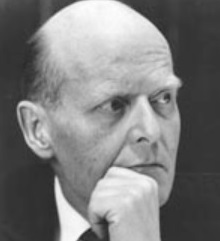
Two of the most prominent figures in Canadian post-secondary music education in the second half of the twentieth century are Helmut Blume and Arnold Walter. Both men were educated in central Europe, including studies in Berlin during the interwar years. They left Berlin in the 1930s, mainly for political reasons, although Blume did have a Jewish grandmother and so, as he remarked sardonically to Paul Helmer, “according to the racial policies of the time, I was besudelt (polluted)” (Growing with Canada, p. 325 n. 48). Both men made their way to England and arrived in Canada within a few years of each other, Walter in 1937 to take up a teaching job in Toronto, and Blume in 1940 as an interned enemy alien.
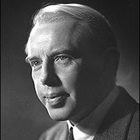
The two exerted a decisive influence on music education in Canada in the post-war years, Blume at McGill University and Walter at the University of Toronto. Each man helped to lead university music education in Canada away from an outmoded British system that was geared to training church organist/choirmasters, towards a modern synthesis of European and American systems. With their elite European upbringing and education, Blume and Walter decisively transformed their respective educational institutions, creating new professional standards that exerted an enormous influence on the musical life of Canada, an influence that continues to be felt today.
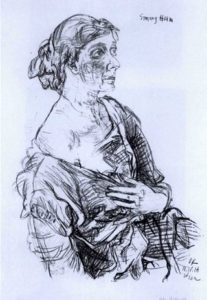
In the field of vocal training, three refugee women musicians had an extraordinary influence on the musical education of young Canadian singers in the postwar era. Emmy Heim and Ruzena Herlinger both enjoyed leading professional careers as singers in Vienna in the 1920s and 1930s. Heim associated with many of the leading composers, poets, and artists of the day (Schoenberg, Stravinsky, Hoffmannsthal, and Rilke were among her acquaintances; Kokoschka made a portrait of her in 1916 –see left) and she had many contemporary works in her repertoire. Herlinger commissioned and premiered Der Wein, a concert aria for soprano and orchestra by Alban Berg. Irene Jessner enjoyed a flourishing opera career in central Europe during the 1930s. All three women had fled Europe by 1938, and eventually ended up in Canada. Heim and Jessner became highly sought after vocal teachers in Toronto; Herlinger taught in Montreal. Heim’s pupils included Lois Marshall and Mary Morrison; Herlinger’s pupils included Joseph Rouleau and Huguette Tourangeau; Jessner’s pupils included Teresa Stratas and Mark DuBois. Collectively, these three women helped to establish Canada as a vocal powerhouse in the postwar musical world.
Performance
Eminent performers among this group of refugee musicians included the harpsichordist Greta Kraus and the pianist John Newmark. Kraus (whose portrait hangs in my office) studied at the Vienna Academy of Music with Heinrich Schenker (analysis) and Hans Weisse (piano). She arrived in Toronto in 1939 and her performances and broadcasts as a harpsichord soloist and continuo player, as well as a director of early music ensembles, made a decisive contribution to the appreciation of Baroque music in Canada. Newmark studied music in his native Bremen and also in Leipzig, and later settled in Berlin. While living in London in 1939 he was interned as an enemy alien and sent to Canada. After his release, he settled in Montreal and became a much in demand accompanist. He performed thousands of recitals in Canada and during lengthy tours abroad, working with hundreds of Canadian and international artists. He also made many recordings and was frequently heard on radio and television broadcasts.
Scholarship
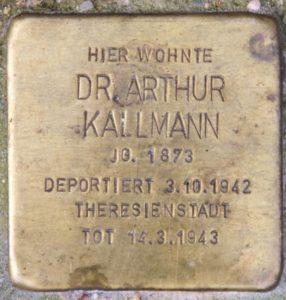
Canadian music studies and ethnomusicology both benefitted from the contributions of refugee musicians. Helmut Kallmann was born into a Jewish family in Berlin and as a teenager he was sent to England in 1939 as part of the Kindertransport program. Like Newmark and Blume, he was interned as an enemy alien and sent to prison camp in Canada. Upon his release in 1943, he enrolled in music studies at the University of Toronto, graduating with a BMus degree in 1949. During his long career in music librarianship, first with the CBC and later as the founding Head of the Music Division at Library and Archives Canada, he was a tireless champion of Canadian music studies. Ida Halpern completed a PhD in musicology at University of Vienna in 1938 on Franz Schubert, and emigrated to Vancouver in 1939. In addition to teaching at University of British Columbia (including the first courses in ethnomusicology there) and fostering classical music performances, she recorded and documented some 500 songs of First Nations peoples. As Kenneth Chen notes, Halpern’s achievement in assembling one of the most extensive collections of First Nations music of the west coast is remarkable, especially considering “the technical, technological, physical, sociocultural, historical, institutional, legal, attitudinal, and many other challenges she had to overcome in her fieldwork” (1995, p. 47).
Given the widespread contributions to music in Canada that these refugee musicians made, which the above description has only begun to document, research on this topic is sorely needed. The forthcoming European Refugee Musicians in Canada research project at the Institute for Music in Canada will engage with the wider debate on the flight of artists from Nazi-occupied Europe, and position that debate within Canadian intellectual history.